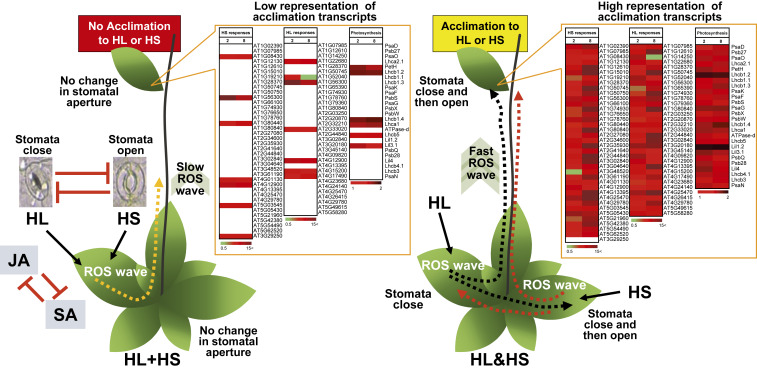Fig. 9.
Model showing that the manner in which plants sense the different stresses that trigger systemic signals during stress combination (i.e., at the same or different leaves) makes a significant difference in how fast and efficient systemic ROS signals and transcriptomic, hormonal, stomatal, and acclimation responses are triggered. When two different stresses are simultaneously applied to the same leaf (HL+HS), the systemic response is suppressed. This is reflected in the expression of systemic HL- or HS-response and photosynthetic-associated transcripts (boxed heat maps; SI Appendix, Fig. S3 and Table 1), rates of SA and JA accumulation (Fig. 7A), accumulation of systemic ROS (dashed orange arrow; Figs. 6 and 8A), and the lack of SAA of systemic leaves (Figs. 5A and 8B). In contrast, when the two different stresses are applied to two different leaves of the same plant, the rate of systemic ROS accumulation is faster (dashed black and red arrows; Figs. 6 and 8A); stomata display a rapid response (Fig. 5B); HL-, HS-, and photosynthetic-associated transcripts accumulate in systemic leaves (boxed heat maps; SI Appendix, Fig. S3 and Table 1); and SAA is induced (Figs. 5A and 8B). Plants are depicted as being able to integrate different systemic signals: however, the manner in which plants sense the different stresses that trigger these signals makes a significant difference in how fast and efficient they are able to acclimate.

